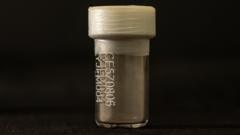The tiny dust fragments arrived in the UK for research into theories surrounding the Moon's formation and Earth's early history. Collected in 2020, the samples signify a monumental step in global scientific collaboration, as China allows international researchers to study the findings. The process will involve meticulous handling to prevent contamination and could lead to discoveries about other celestial processes.
The importance of this research cannot be overstated as Professor Anand, alongside his dedicated team, prepares to work with the samples in a spotless, high-security lab environment. The results from this study could prove ground-breaking for both lunar science and international cooperation in space exploration.
In an effort to explore the mysteries of the Moon, the team has just a year to conduct their research—where each sample is crucial. Future studies may shed light on the Moon's geological history and even provide insights into volcanic activity on its far side. As Anand suggests, this could mark the beginning of a long-lasting partnership between China and international scientists, combining efforts to further expand our understanding of the cosmos.
The importance of this research cannot be overstated as Professor Anand, alongside his dedicated team, prepares to work with the samples in a spotless, high-security lab environment. The results from this study could prove ground-breaking for both lunar science and international cooperation in space exploration.
In an effort to explore the mysteries of the Moon, the team has just a year to conduct their research—where each sample is crucial. Future studies may shed light on the Moon's geological history and even provide insights into volcanic activity on its far side. As Anand suggests, this could mark the beginning of a long-lasting partnership between China and international scientists, combining efforts to further expand our understanding of the cosmos.





















